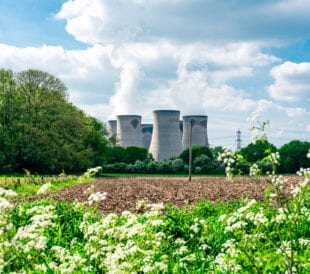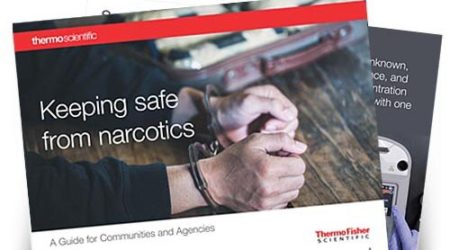 In light of the EPA’s Air Quality Awareness Week – running from May 1 to 5, 2023 – we have created a series of blog articles that identify the main polluting gases and highlight the importance of implementing mitigation strategies, helping to protect the environment and deliver cleaner air for future generations. Today’s EPA’s campaign is focused on Air Quality and Transportation.
In light of the EPA’s Air Quality Awareness Week – running from May 1 to 5, 2023 – we have created a series of blog articles that identify the main polluting gases and highlight the importance of implementing mitigation strategies, helping to protect the environment and deliver cleaner air for future generations. Today’s EPA’s campaign is focused on Air Quality and Transportation.
The US EPA reports that “living and working near sources of air pollution can lead to higher exposures to air pollution, many of which contribute to negative health effects, including asthma and cardiovascular disease. Some communities are more impacted by air pollution from transportation than others, making air pollution an environmental justice concern. Children, older adults, people with pre-existing cardiopulmonary disease, and people living in low socioeconomic communities are among those at higher risk for health impacts associated with living near busy highways, rail yards, marine ports, and industries where pollutants are emitted from multiple sources.”
The US EPA has innovative resources that aim to reduce air pollution from transportation sources and improve public health — from green vehicle guides, clean bus programs, diesel emission reduction program, ports initiatives. near-road construction barriers, and more. But the US is not the only country concerned with air quality and their transportation systems.
We previously wrote (2020) that Seoul Metropolitan Subway in South Korea is one of the most widely used rapid railway transport systems in the world, featuring ten subway lines, and it most likely holds true today. The system serves ten million people in the capital city, Seoul, and the provinces of Gyeonggi, Incheon and northern Chungnam. The total length of the subway line is approximately 327.1km, including 290km underground. The subway has 302 stations, serving close to eight million commuters each day.1
These commuters depend on the convenience of subway systems for transportation, which have been described as the “lifeline of urban development”. This utilization of the subway system has helped to ease traffic jams and reduce the environmental impact to ground level urban air quality. Nonetheless, there has been a growing concern over indoor air quality (IAQ) in subway systems, since people spend a considerable amount of time in the subway systems daily. Most subway systems are underground in confined spaces where air pollutants are generated internally and entered from the outdoor atmosphere.2
Driven by the Seoul Ordinance on Air Quality Standard for Underground Space 2000 and other national regulations, Seoul Metropolitan Government has established the ‘Indoor Environment Management System’ to promote cleaner and healthier air in the underground space. The system provides updated indoor air quality information online to the public and also aims to motivate facility managers and building owners to take voluntary measures to improve the indoor air quality of their sites.3 For example in metro subways, it is highly recommended that platform screen doors (PSD) are installed, air quality measurement systems are put in place, ventilation operations and cleanings are periodically run.4
In June 2019, Seoul Metro (major operator of Seoul Metropolitan Subway) announced that 840 air quality sensors had been installed at 277 stations and several trains operating on subway lines 1 to 8 to monitor fine dust levels in real-time. The air quality improved significantly when operation time of the ventilation system and cleaning process were adjusted based on data collected. Results showed that 24.3% decrease in fine dust level and 24.4% decrease in ultrafine dust level at Gangnam station, one of the busiest stations in Seoul. Seoul Metro aims to install 4,432 high-end air purifiers and ambient particulate monitors for PM2.5 in all its stations by 2020.5 (The US EPA defines Particulate Matter 2.5 as pollution that consists of fine inhalable particles, with diameters that are generally 2.5 micrometers and smaller.)
One such system chosen is the Beta Continuous Ambient Particulate Monitor, the monitor uses the radiometric principle of beta attenuation through a known area on a fibrous filter tape to continuously detect the mass of deposited ambient particles. Additionally, the monitor measures alpha particle emissions directly from the ambient aerosol being sampled and excludes negative mass artifacts from the daughter nuclides of radon gas decay to achieve a refined mass measurement. Simultaneous refined mass measurements of sampled particulate on the filter tape and sample volume measurement provide a continuous concentration measurement of ambient particulate concentration that provides for long-term unattended operation.6
Update: Seoul Global Challenge
Korea’s digital media resource for the Korean Startup Community, Seoulz, reported in February 2023 the Seoul Global Challenge, which allowed startups from around the world to work with government agencies in Korea to help solve air quality issues on subways. According to the article, “Through the Seoul Global Challenge, Korea set an example for other global cities to look towards innovation to solve their issues. Seoul has established a strong foothold in innovative and technology-driven solutions. Therefore, this has paved the way for young, high-growth startups in Korea that have provided a better quality of life for their citizens. This is why Seoul has placed technology entrepreneurship at the center of its economic development strategies. Now the mission is to spread the Seoul Global Challenge to the world. This involves bringing in innovative companies from around the world to help solve issues related to improving the air quality on subways in Korea….”
It doesn’t matter where the transportation system is located — the US, Korea, or anywhere else in the world — implementing mitigation strategies to help protect the environment and deliver cleaner air for future generations is crucial to everyone.
References (Note: some previous links are not working but are left below for reference purposes)
4 http://cleanindoor.seoul.go.kr/contents.do
5 http://koreabizwire.com/seoul-metro-installs-air-quality-sensors-in-subway-stations
Editor’s Note: This article was originally written by Fraulein Moey and published Nov 3, 2020, but has been updated.





Leave a Reply